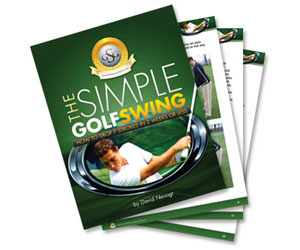Golf Tips Choosing A Driver
Golf Tips: Choosing A Driver
The irons weigh from 14½ ounces for the No. 2 to 16½ for the No. 9. Sand wedges will go up to 17½.
Shafts of clubs are graded in three types, flexible, medium, and stiff. Most of the bigger, stronger pros use the stiff shaft. The medium shaft is for the average player. The flexible is generally considered best for players of more advanced age and for women. It is best suited for a slow swing. The limber-ness of a shaft is known to the manufacturers as shaft deflection.
We have heard a great deal, for years, about swing weight. The term is tossed about so loosely, in fact, that few players have much of an idea what it is. Swing weight indicates the distribution of the weight of a club. It is the proportion of the weight in the head compared to the shaft and the grip. Swing weights are listed from C—0 to D—9.
But a D—9, for instance, doesn’t mean that 9 ounces of a club weighing 13% ounces are in the head. D—9 is merely one of the calibrations on what is known as a lorythmic swinging weight scale.
A D—9 is no club for the average player to use, either. It is what Arnold Palmer and many of the other pros use, and it is for a strong, fast swinger. For the average player the ideal swing weight is from D—1 to D—4. For women the range is from C—4 to C—6.
In a general sense, the more you “feel” the head of the club when you waggle it or swing it, the higher the swing weight. You have often heard players say, and no doubt you have said it yourself, when handling a new club, “Feels like a lot of head in this.” What you are feeling is the swing weight.
You could be fooled, of course, by the shaft. A medium swing weight, for instance, in a club with a flexible shaft, would feel like a very high swing weight. You would “feel” an inordinate amount of head when you swung it. In fact, with a club like this, you would have a very difficult time developing a decent swing at all. But the manufacturers have taken care of this. They do not put out clubs with high swing weights on flexible shafts. In men’s clubs the swing weights for a flexible shaft are D—0 and D—1. For medium shafts they are D—1 to D—4. For stiff shafts they are D—4 to D-9.
Which Clubs to Carry
Since the USGA permits the carrying of fourteen clubs, it would be difficult to persuade the average golfer that he shouldn’t take full advantage of the rule. He would not be happy, indeed he would feel himself laboring under a handicap, carrying fewer than the rule allows. So, which ones should they be?
From the conventional set of three woods, nine irons, a sand wedge, and a putter, the average player should drop the No. 1 iron and the No. 2 wood. For these he should substitute the No. 4 wood and a pitching wedge. The No. 2 wood and the No. 1 iron, with their relatively straight faces, are the hardest clubs of all to use. Many pros dispense with the No. 2 wood, the old brassie, though most of them carry a No. 1 iron, mostly for use off a tee. If the pros cannot use them effectively, what chance does a 16-handicapper have to make them behave?
It is also a fact that most golfers find a lofted wood easier to handle than a long iron. This seems to be specially true as the player grows older. If you are one of these, and do not want to or cannot take the time to master the longer irons, then drop out the No. 2 and pick up a No. 5 wood.
Generally speaking, we recommend the carrying of a driver, Nos. 3 and 4 woods, Nos. 2, 3, 4, 5, 6, 7, 8, and 9 irons, a pitching wedge, a sand wedge, and a putter.
There are some to whom the No. 1 wood, the driver, seems to be a special type of poison. There is no logical reason for this. Anybody who can hit a 3 wood, or any other wood, off the fairway has more than enough ability to hit a teed-up ball with a driver. If you hook or slice so badly with the driver that you are afraid to play it, something is radically wrong with your swing.
The average driver can weighs 13¼ to 13½ ounces and is 43 inches long, measured from the base of the heel to the tip of the shaft. The other woods are shorter by about a half inch with each number. The No. 2 iron is about 38% to 38⅝ inches, and the others drop about 7/16 of an inch each, down to the No. 9.





